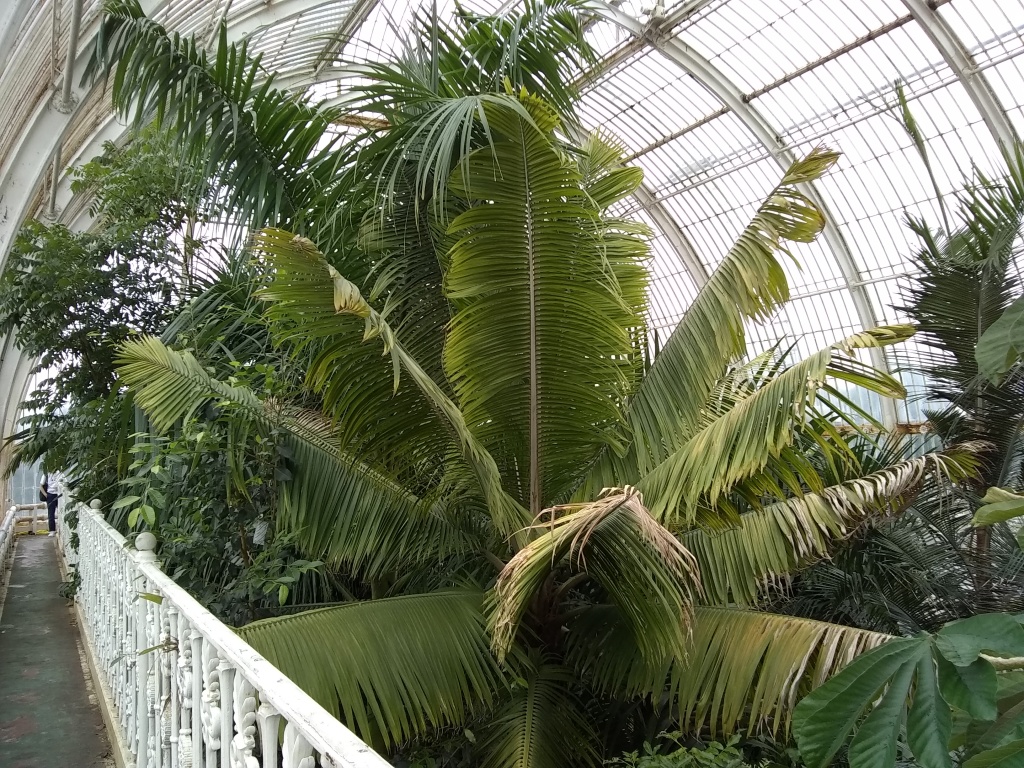
Oil palm is arguably the most important tropical tree crop. A few decades ago, the title would have gone to rubber, a tree that is well-commemorated in Britain’s Royal Botanic Gardens at Kew. A decent specimen grows in the Palm House, though the tree is not a palm at all. (For a history of the Palm House, see Kate Teltscher’s Palace of Palms)
The oil palm is harder to appreciate at this site, where cold weather means it has to grow indoors.
The African Oil Palm (Elaeis guineensis) in Kew’s Palm House doesn’t look very impressive. It’s crammed in a bed with other palms, without much of a trunk visible. Scars from pruned branches are visible in the photo the right, along with the sharp spines that line palm fronds.

On the upper walkway in the Palm House, you can see a bit of the oil palm’s crown. It doesn’t stand out from the other palms. I can’t blame the botanists for it–the tree surely doesn’t love growing in a cramped greenhouse bed–but there’s no fruit, no visible fruit stems, or flowers, or other indicators of why this plant is so important.

When I last visited in 2018 the Palm House had some new signage alluding to the economic importance of oil palm, but I feel like the plant needs more recognition. (The steamy building is probably not the place for an interactive digital exhibit.) The Economic Botany collection at Kew has some great oil palm material that could help tell the oil palm’s story in new future exhibits.